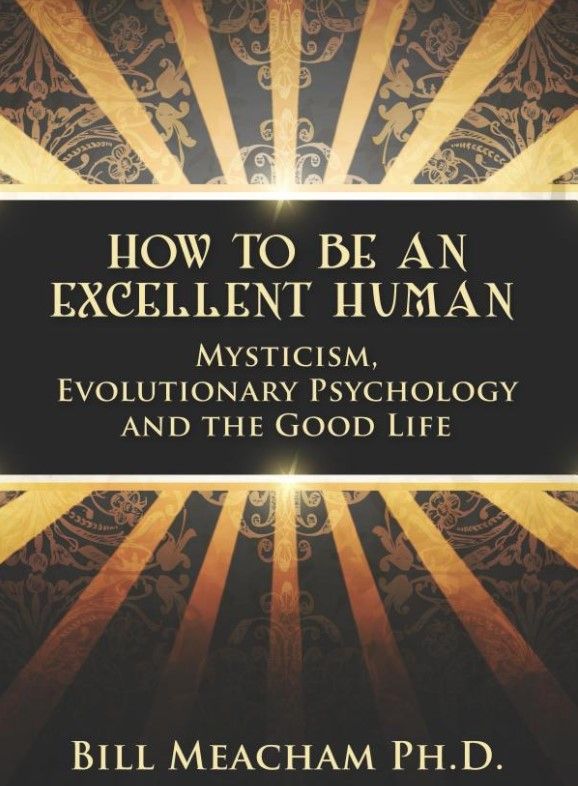A Whiteheadian Solution to the Combination Problem
Maybe it’s because of algorithms that know what I like to read about, but I see a lot of interest in panpsychism lately.(1) Today’s essay concerns an objection to that theory, the combination problem, and how Alfred North Whitehead's metaphysics process can address it. Panpsychism without process is only part of the story. You need a process to solve the combination problem.
Panpsychism is the metaphysical theory that everything has, as I like to say, an inside and an outside. The inside is the world as experienced by an entity, and the outside is how an entity is experienced by other entities. The inside is subjectivity or mind, the view of the world that each of us has privately. The outside is a physical reality, describable from a third-person, neutral-observer point of view in mathematical and structural terms. Panpsychism is the view that everything, from the smallest quantum event to the most complex living being, has a mental, subjective, and physical aspect. The term comes from Greek for “all” and “soul” or “mind.”

Here’s an example. Imagine looking at lapis lazuli, a gemstone prized for its intense blue colour. The stone's colour as we perceive it is part of our inside; it is something we experience. The colour is known subjectively; each of us can see the blue but cannot directly know how it looks to anyone else. Nor can physical sciences such as physics and chemistry tell us how it looks. We each have to look at it ourselves to know. On the other hand, the chemical composition of the stone is objectively knowable; anyone with suitable training can analyze it. That composition is part of the outside of the stone.
We human beings obviously have both an inside and an outside. The appearance of the stone is part of our inside, along with our thoughts and emotions about it. How we appear to others, our height, weight, body-mass index, the colour of our eyes, etc., are part of our outside. The stone obviously has an outside, but does it also have an inside? Panpsychism says that, in a sense, it does.
The theory does not assert that stones have psyches in the same way that humans do. That would be ridiculous, as stones exhibit none of the complex behaviour of humans. Instead, the most plausible version of the theory, which Galen Strawson calls “micropsychism,”(2) is that the elementary building blocks of the world consider their world analogous to but much simpler than how we humans experience our world. Quantum entities such as muons, quarks and the like combine to form the everyday objects, living and non-living, that we are familiar with. Some combinations, like stones, have no subjectivity of their own. Others, living beings, do. But all are composed of entities that, like us, have both aspects.
This is a metaphysical view. It’s not verifiable by experiment but makes sense in terms of theoretical consistency and coherence.(3) The aim of metaphysics (the speculative variety, not the analytic or logical variety) is to frame a system of general ideas that include every element of our experience. Metaphysically, it makes more sense to think of everything having an inside and an outside than to think of some things having both and some things have only one, an outside.
This idea is not uncontroversial. The most obvious objection is that it is too anthropomorphic; it interprets everything as being like us, having a point of view on the world, even though physical science shows no evidence of such a thing regarding the inanimate matter. Hans Jonas, rooted in existential phenomenology and biology, has an answer. To construct a coherent metaphysics, he says, it is best to start with what we know most intimately, our own experience of ourselves as composed of both mind and body. Our “psychophysical totality,” he says, “represents the maximum of concrete ontological completeness known to us.” From that starting point
[we proceed] by way of progressive ontological subtraction down to the minimum of bare elementary matter. … “Dead” matter, as one extreme of a spectrum, represents a limiting mode of the properties revealed by feeling life.(4)
Instead of assuming that the world is fundamentally full of unliving particles and then trying to figure out how our ability to be conscious arises from them, we start with the undeniable fact that we are conscious and figure out how unliving stuff fits into the picture. Anthropomorphism is thus not a bug but a feature.
A stronger objection is what is known as the “combination problem.” Assuming that elementary units of reality have some aspect of the mind, how do individual minds combine to form the complexity of mental life that we know as our own experience? Keith Frankish says,
Panpsychists hold that consciousness emerges from the combination of billions of subatomic consciousnesses, just as the brain emerges from the organisation of billions of subatomic particles. But how do these tiny consciousnesses combine? We understand how particles combine to make atoms, molecules and larger structures, but what parallel story can we tell on the phenomenal side? … If billions of humans organised themselves to form a giant brain, each person simulating a single neuron and sending signals to the others using mobile phones, it seems unlikely that their consciousnesses would merge to form a single giant consciousness. Why should something similar happen with subatomic particles?(5)
This is not a new objection. Back in the 1890s, William James made a similar claim:
Where the elemental [mental] units are supposed to be feelings, the case is in no wise altered. Take a hundred of them, shuffle them and pack them as close together as you can (whatever that may mean); still each remains the same feeling it always was, shut in its own skin, windowless, ignorant of what the other feelings are and mean. … The private minds do not agglomerate into a higher compound mind.(6)
The problem with these formulations—and there are many more like them—is that they assume that the basic units of reality are like bits of stuff with no connection. Frankish likens subatomic particles to people sending signals via cell phones. Certainly a less intimate relationship than speaking in person, let alone touching each other. James says mental units are isolated from each other and ignorant of the feelings of other units. Suppose you start assuming that the tiniest actual entities are mentally cut off from each other. In that case, imagining how their mentalities could combine to form something more comprehensive is hard. But that is not the only assumption you can make. A more coherent approach is to assume that the elementary entities are not bits of stuff but rather events and that those events are inherently intertwined and related to each other. That’s the approach the 20th-century mathematician and philosopher Alfred North Whitehead took.
Whitehead argues that reality consists of processes rather than material objects and that processes are best defined by their relations with other processes, thus rejecting the theory that reality is fundamentally constructed by bits of matter that exist independently of one another.(7) His view is that the fundamental units of reality, the ultimate real entities, are occasions, not inert particles. Occasions are quite tiny. He wrote at a time when quantum mechanics was being developed, and undoubtedly, the mysterious behaviour of reality at the subatomic level informed his thinking. Entities sub microscopically small is not material as we generally think of it. Quantum-level entities do not bounce around at the mercy of external forces like billiard balls; instead, they seem to have a quasi-existence in a field of mere potentiality until they are detected; then, they become actual. The interaction between them and someone or something else that detects them is essential to their existence. Reality at that level is relational and dynamic.
Lest, this idea seems utterly baffling; remember our discussion of anthropomorphism. Whitehead’s speculative metaphysics seeks categories of explanation that can apply to the quantum level of reality and the world revealed by our unaided senses. In our everyday world, it is undeniable that, unless we are asleep or sedated, we are aware of our surroundings and remember our past. And, of course, others can be aware of us. So Whitehead posits that subatomic actual occasions also are, in a way, aware of their surroundings and their own past. Whitehead calls them “drops of experience, complex and interdependent”(8) and “occasions of experience.”(9) The tiniest actual occasion is structurally similar to a moment of rich human experience, albeit in a primitive, attenuated form.
These actual occasions, the least units of reality, are a bit like subatomic particles, with some important differences:
- Each is momentary, coming into being, going through various phases and then passing away.
- The final phase of an actual occasion is not fully determined by the beginning. There is room for novelty, for the possibility of something new.
- Each actual occasion experiences its past and present surroundings in a primordial way. It has an inside.
- Each actual occasion is experienced by other actual occasions. It has an outside.
- We think of a particle as a series of these actual occasions. A single electron is a series of momentary electron occasions that form an enduring object, much like the momentary frames of a movie form a continuous picture.
- Nonliving things are composed of streams of actual occasions whose primordial experiences randomly cancel each other out. A stone as a whole does not have a mind.
- The primordial experiences of the actual occasions that make up living things, such as plants, animals and human beings, bind together and reinforce each other, giving birth to a higher-level experience. Living things do have minds. The richest and most intricate example we know of is our own conscious experience.
The combination problem is to explain how they do that binding and reinforcing. The key lies in what Whitehead calls prehension, a technical term in his system.(10) In zoology and biology, the ability to grasp or seize something. Think of getting a drink of water; you pick up the glass to bring it to your mouth. It’s an active process, similar to vision. Most of the time, we don’t just passively absorb what is before our eyes. Instead, we pay attention to certain features of what surrounds us and let the rest recede into the background. We can think of paying attention as a visual form of reaching out and grasping.
Whitehead extends the term to encompass actual occasions which do something similar. Each one comes into being by prehending the qualities of its predecessors and surroundings and binding them together into a new occasion of experience.(11) It’s not a passive process. It’s not a matter of an entity coming into being and merely absorbing impressions of its surroundings. The impressions—the prehensions, as Whitehead says—constitute the new occasion.(12) Nothing to the new occasion except what is prehended.
And what is prehended is both physical and mental. Each actual occasion prehends all the aspects, both interior and exterior, of its prior actual occasion and the actual occasions and enduring objects in its surroundings. Not only does it prehend the physical aspects of what surrounds it, it prehends the mental aspects. It does more than detect and incorporate the outward appearance of its neighbours. As the hippies used to say, it also picks up their vibes.
To my knowledge, Whitehead does not precisely spell out the situation in these terms, but the upshot is that actual occasions and the enduring objects they make up are not shut in their own windowless skins, as James asserts. Individuals are not as separate mentally as we think. Panpsychism says that mentality suffuses and pervades all beings. It can “leak,” as it were, from mind to mind.
Many of us have had mild psychic or telepathic experiences. A wife asks where her glasses are; her husband has a mental image of their location but does not say it out loud, and then she says, “I bet they’re over here,” and so they are. One thinks of a friend, and then the friend calls or emails. Those talented with animals know that visualizing a desired scenario—that the animal be docile when approached, for instance—tends to make it happen. A comprehensive metaphysics must also incorporate that aspect of full-blown human experience. The ability to prehend mentality is the micro-level basis of such phenomena.
And that is the solution to the combination problem. Actual entities prehend each other’s mentality, so the enduring entities they are part of can combine into a more comprehensive mind.
But that happens only in living things. Why not in nonliving things?
If everything has both an inside and an outside, then the organization of the outside should have some bearing on the richness of the inside. What is unique about how matter is organized in living beings that would account for the emergence of our complex and vivid form of experience is what persists through time. The physical matter of nonliving things remains the same occasionally, and their form changes only through the impact of external forces. Living beings are the opposite: their physical matter constantly changes over time, and only their form persists.
The physical matter of dead things persists momentarily without changing or changing only through external forces. In any given slice of time, the substance of a dead thing is the same as in any other slice of time. The totality of what it is can be encompassed in a single instant.
Living things are strikingly different. The physical matter that composes living things is constantly changing through metabolism, the process by which matter is ingested, transformed and excreted. What persists is not the matter itself but the form in which that matter is organized. A single slice of time does not encompass the unity of the living being. Only over time can we grasp its functional wholeness. I follow Hans Jonas here.(13) The sense of being a whole conscious entity emerges with metabolism, the ability of a simple organism to maintain its structure through time by exchanging physical matter with its environment. The physical matter changes, but the organizational form doesn’t. (Or, it does, but it evolves so there is a continuity.) The structure of the material aspect—a changing material process that has a unity of form over time—gives rise to a unity of experience over time, a macro experience, which is of a higher order than the micro experiences of the constituent elements.
Living things, having a unity of form over time as their constituent material changes, are not mere aggregations. A complex mentality accompanies their complex unity because the constituents' actual occasions prehend the mental aspects of each other. The primordial experiences of the actual occasions composing living things, such as plants, animals and human beings, bind together and reinforce each other, giving birth to a higher-level coherence of experience. Contra James, the constituent minds are not entirely private and agglomerate into a higher compound mind. Whitehead’s process of metaphysics tells us how.
Notes
(1) For instance, Rosza, “Panpsychism.”
(2) Strawson, “Realistic Monism,” p. 25.
(3) Meacham, “Matter, Mind and Metaphysics.”
(4) Jonas, The Phenomenon of Life, pp. 23-24.
(5) Frankish, “Why panpsychism fails.”
(6) James, Principles of Psychology Vol. I, p. 160.
(7) Wikipedia, “Alfred North Whitehead.”
(8) Whitehead, Process and Reality, p. 28.
(9) Whitehead, Adventures of Ideas, p. 221.
(10) Whitehead, Process and Reality, pp. 28-29, 32, 35.
(11) That’s a simplification. Actual occasions also incorporate into themselves what Whitehead calls “eternal objects”, but they are beyond the scope of this essay. See Process and Reality, pp. 35 and 37.
(12) Cobb, Whitehead Word Book, p. 32.
(13) Jonas, “Evolution and Freedom,” pp. 64-67.
References
Cobb, John B. Jr. Whitehead Word Book, Claremont, CA: P&F Press, 2008. Online publication https://www.informationphilosopher.com/solutions/philosophers/whitehead/WordBookWeb.pdf as of 8 August 2021.
Frankish, Keith. “Why panpsychism fails to solve the mystery of consciousness.” Online publication https://aeon.co/ideas/why-panpsychism-fails-to-solve-the-mystery-of-consciousness as of 19 January 2019.
James, William. The Principles of Psychology Vol. I. New York: Henry Holt and Company, 1918. Online publication https://www.gutenberg.org/files/57628/57628-h/57628-h.htm as of 16 November 2020.
Jonas, Hans. The Phenomenon of Life. Evanston, Illinois: Northwestern University Press, 2001.
Jonas, Hans. “Evolution and Freedom: On the Continuity among Life-Forms.” In Mortality and Morality: A Search of the Good after Auschwitz, ed. Lawrence Vogel. Evanston, IL: Northwestern University Press, 1996.
Meacham, Bill. “Matter, Mind and Metaphysics.” Online publication https://www.bmeacham.com/blog/?p=951.
Rosza, Matthew. “Panpsychism, the idea that inanimate objects have consciousness, gains steam in science communities.” Online publication https://www.salon.com/2021/07/23/panpsychism-the-idea-that-inanimate-objects-have-consciousness-gains-steam-in-science-communities/ as of 28 July 2021.
Strawson, Galen. “Realistic Monism: Why Physicalism Entails Panpsychism.” Consciousness and its Place in Nature. Ed. Anthony Freeman. Charlottesville VA: Imprint Academia, 2006. pp. 3-31.
Whitehead, Alfred North. Adventures of Ideas. New York: The Free Press, 1967.
Whitehead, Alfred North. Process and Reality: An Essay in Cosmology. New York: Harper and Row Harper Torchbook, 1960.
Wikipedia. “Alfred North Whitehead.” Online publication https://en.wikipedia.org/wiki/Alfred_North_Whitehead as of 5 August 2021.

How To Be An Excellent Human
Mysticism, Evolutionary Psychology and the Good Life by Bill Beacham, Ph.D.

